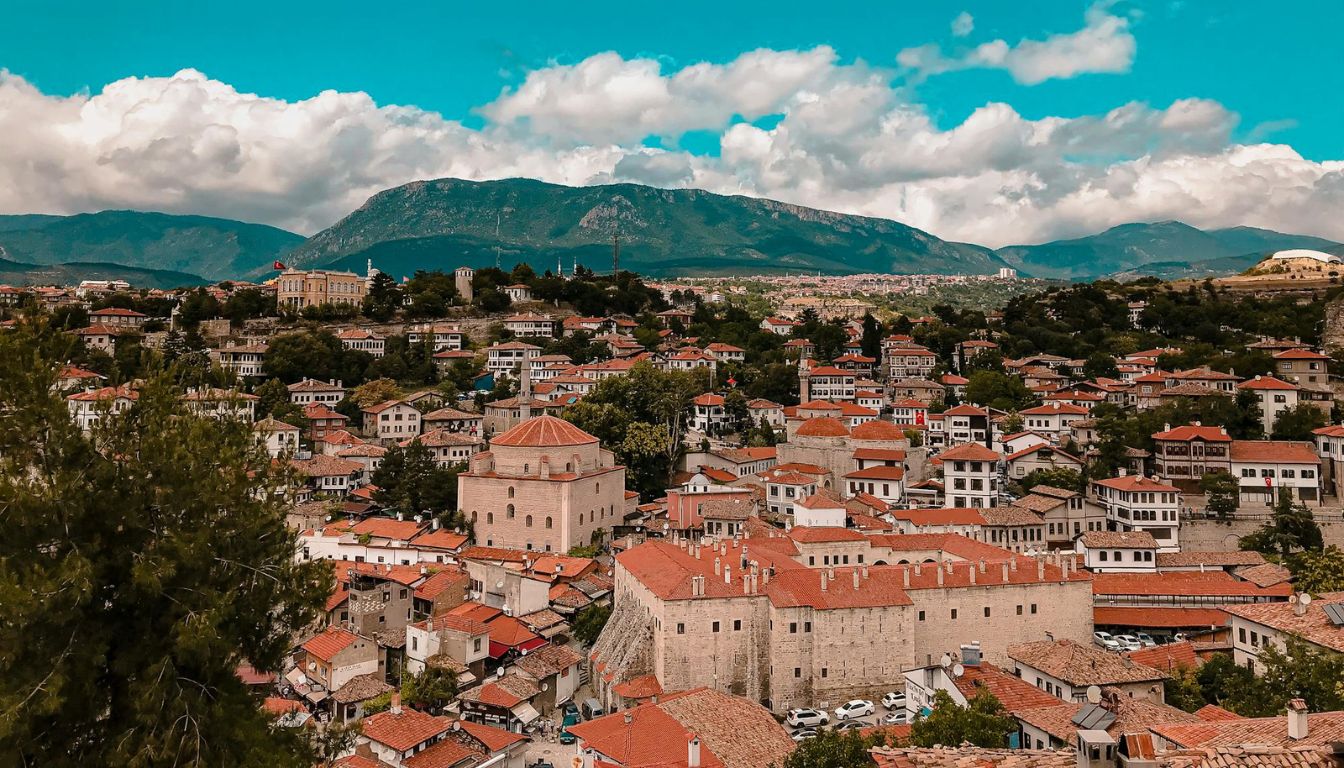Safranbolu, Turkey
Step into a living museum of Ottoman architecture, where time-honored traditions flourish and centuries-old mansions tell stories of Turkish heritage. Safranbolu, a UNESCO World Heritage site, preserves the essence of 17th-century Turkish urban life, offering visitors an authentic journey through time.
This guide reveals local secrets and cultural treasures, transforming your visit into a memorable journey.
Table of Contents
Best Places to Visit
Safranbolu’s historic districts each showcase unique aspects of Ottoman life:
- Çarşı (Old Town): Historic market district with traditional crafts
- Bağlar (Vineyards): Summer mansions and gardens
- Kıranköy: Historic Greek quarter architecture
- Yoruk Village: Traditional rural Turkish life
- Hıdırlık Hill: Panoramic views of old town
Must-Visit Cultural Landmarks
- City Museum: Former government building showing local history
- Kaymakamlar Museum House: Perfectly preserved Ottoman mansion
- Old Government House: Traditional architecture example
- Historic Clock Tower: Town’s iconic timekeeper
- Cinci Han: Historic caravanserai turned hotel
- İzzet Mehmet Paşa Mosque: Ottoman religious architecture
Cultural Insights & Traditions
Safranbolu’s culture centers around several key elements:
- Traditional Crafts: Leather-making, copper work, and blacksmithing
- Saffron Heritage: Town named for this precious spice
- Turkish Coffee Culture: Traditional preparation methods
- Local Cuisine: Famous for lokum (Turkish delight) and saffron dishes
- Architecture: Unique Ottoman house construction
- Traditional Markets: Historic shopping districts
Top Cultural Experiences
- Join a Turkish coffee ceremony
- Participate in a traditional crafts workshop
- Experience lokum making
- Learn about Ottoman architecture
- Visit a working blacksmith
- Take part in saffron harvesting (October only)
Best Time to Visit
- Spring (April-May): Perfect weather, blooming gardens
- Fall (September-October): Saffron harvest season
- Summer (June-August): Festival season
- Winter (December-February): Snow-covered historic streets
- Avoid rainy season (March)
How to Get Around
- Walking: Best for old town exploration
- Minibuses: Connect different districts
- Taxis: Available for longer distances
- Bicycle: Suitable for Bağlar district
- Guided Tours: Recommended for historical context
Where to Stay
- Historic Mansions: Converted Ottoman houses
- Çarşı District: Heart of old town
- Bağlar Area: Quieter, garden settings
- Boutique Hotels: Restored historic buildings
- Traditional Guesthouses: Family-run accommodations
Best Places to Book Your Trip
Planning your dream trip is easy with trusted travel platforms. To secure the best deals on flights, accommodations, and tours, check out:
- Booking.com: Offers a wide range of hotels, apartments, and hostels to suit every budget.
- GetYourGuide: Book unforgettable experiences like guided tours, cooking classes, and fast-track passes.
- Expedia: A great platform for bundling flights, hotels, and car rentals for a seamless booking experience.
- Skyscanner: Perfect for finding the best deals on flights.
Pro Tips for Visitors
- Book historic mansion stays in advance
- Learn basic Turkish phrases – locals appreciate the effort
- Visit early morning for best photography
- Respect private homes when photographing
- Wear comfortable walking shoes for cobblestone streets
- Try local saffron products from certified shops
- Visit the market early for authentic atmosphere
- Book guided tours for architectural insights
- Carry cash for traditional markets
- Consider seasonal activities when planning
- Try local breakfasts in historic mansions
- Visit hammams during off-peak hours
- Purchase authentic crafts from workshops
- Respect local customs and dress modestly
Step back in time as you wander through Safranbolu’s perfectly preserved streets. Whether you’re staying in a historic mansion, learning traditional crafts from local artisans, or savoring saffron-infused delicacies, each moment connects you to centuries of Ottoman heritage and authentic Turkish culture.
Traditional Kuyu Kebabı of Safranbolu: A Local’s Guide to Authenticity













